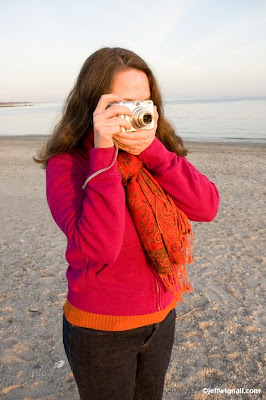One of the best reasons for doing visual research if you're traveling largely to take photos is that it helps you to uncover lesser-known shooting treasures that are near your primary destination. If you're going to Tuscon primarily to shoot the saguaro cactus, for example, you'll be within minutes of the spectacular San Xavier del Bac mission church just south of the city. To visit Tucson and not devote a morning to photographing this incredible church would be a crime. You might also want to drive a bit south and west to visit the very touristy (but fun) OK Corral. Once you start doing visual research these places will pop up and then you can decide which ones look like they're worth a side trip.
Here are some of the places where I do visual research for a trip:
- Flickr For me, Flickr.com is the mother load of photo research sites. There are something like four billion photos on Flickr and you can find pictures of almost any place on earth. What's really cool about this site is that you will often find photos by people who live in that are and they usually have far deeper coverage. Also, since there is contact information on the site for each photographer, you can easily write and ask for advice on exactly where they shot a particular photo or to see if they have any destination suggetions. That doesn't mean they'll answer you, but most people are glad to share their favorite places. I wrote to a Canadian photographer about what hotel he was in when he when he shot a night skyline of Chicago (the caption said it was shot from a hotel room window) and he not only gave me the answer, he told me what room to request!
- Google Image Search While this is a somewhat less personal place to search, doing a Google Images search will often lead you to great websites and blogs about a place. Also, be sure when you do a Google search to look under the "more" pulldown menu at the top of the page and then select "blogs" as a search criteria. This will let you search for incredibly current destination info and photos. When I'm trying to find out if the wildflowers are blooming in the Southwest, I always do a blog search and often find photos shot that very day. Amazing.
- State Tourism Sites While these sometimes tend to be a bit static in their content, often official state tourism sites have videos of popular destinations and parks and links to private websites. You'll also usually find a list of all state and local parks and that can be a real catalyst for trip planning.
- YouTube There's nothing that brings a place down to reality like a video shot through someone's rental-car windshield and YouTube is just overflowing with this stuff. Just type in the name of the place and the words "drive" or "driving video" and you'll find plenty. I've been planning a trip to Yellowstone and I typed in "Yellowstone Drives" one night and spent the next two hours watching things like elk bashing into other peoples' cars and dusty drives from the Grand Tetons to Yellowstone all shot through car windows (if you're going to create one, do me a favor and bring a bottle of Windex along!). I love watching these vids because I like to know what the roads look like, what you can see from the road and the general lay of the land.
- Old Fashion Books Finally, don't forget there are some very visual and useful books in print! The Insight Guides like the Insight Guide Bermuda (Insight Guides)
are just packed with great, if somewhat outdated, photos and lots of good travel info. And there's nothing like being inspired to plan a trip while you're sitting on the couch flipping through the pages of a real book. They'll be extinct soon, so take advantage while you can.



















